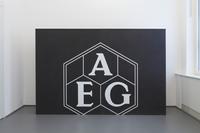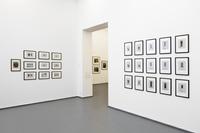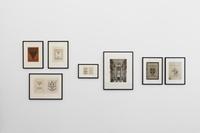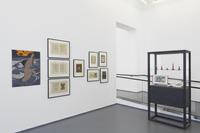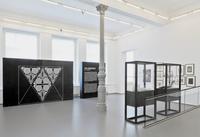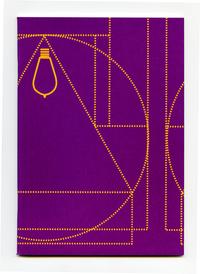Peter BehrensThe Practical and The Ideal–Kaiser Wilhelm Museum
Finding harmony between the practical and the ideal—this was Peter Behrens’ programmatic declaration in a letter to the founding director of the Kaiser Wilhelm Museum, Friedrich Deneken. For the first time, Kunstmuseen Krefeld will present a monographic exhibition based on its holdings of works by the groundbreaking artist, designer and architect Peter Behrens (1868–1940). On the occasion of Behrens’ 150th birthday, the museum has undertaken an extensive restoration campaign of this collection and has processed the previously unpublished correspondence between Peter Behrens and Friedrich Deneken.
The museum’s collection encompasses around 250 works by Peter Behrens, mainly produced between 1900 and 1912, including advertising and typography, glass works, wallpaper designs, posters, woodcuts, books, catalogs and photographs. By example of this telling collection, it is possible to track Behrens’ rapid evolution from young Jugendstil artist to modern graphic and industrial design pioneer. The exhibition traces this development, by emphasizing in particular typography, book design as well as the corporate designs he developed for Delmenhorster Anker Werke and AEG in Berlin, for which he also designed the products. A large part of the collection originally belonged to the Deutsches Museum für Kunst in Handel und Gewerbe (German Museum of Art in Commerce and Industry). In 1923 this groundbreaking design collection was acquired by the Kaiser Wilhelm Museum.
Founded in 1897, the Kaiser Wilhelm Museum was originally conceived as an institution for the fine and applied arts, where art and design for everyday life would meet. Friedrich Deneken, the founding director, was one of the most progressive representatives of the Reform Movement in Germany. He first contacted Behrens in 1898. The museum archives hold an extensive 150-page correspondence between the two protagonists, which is practically unknown even to scholars. It recounts a dialogue between an ambitious museum director and an aspiring artist, who together were trying around 1900 to connect art and the design of everyday life in a time of upheaval around 1900.
The exhibition architecture and graphic design has been developed in collaboration with a team of students of the Peter Behrens School of the Arts, Düsseldorf, under the academic guidance of Prof. Dr. Thorsten Scheer, assisted by Friederike Peters.
The exhibition has been organized in cooperation with MAK Köln and the LVR Industriemuseum Oberhausen. Opening in March and April, these institutions show complementary exhibitions that focus on different topics. Together, these shows take part in a prologue to the NRW-wide project “100 jahre bauhaus im westen”.
The exhibition is accompanied by a publication, realized in cooperation with MAK Köln and LVR Industriemuseum Oberhausen (German/English) and published by Kettler Verlag, Dortmund. Presented as a box set, each museum will illuminate new aspects of Behrens’ work in twelve thematic booklets.
Curator: Dr. Magdalena Holzhey

